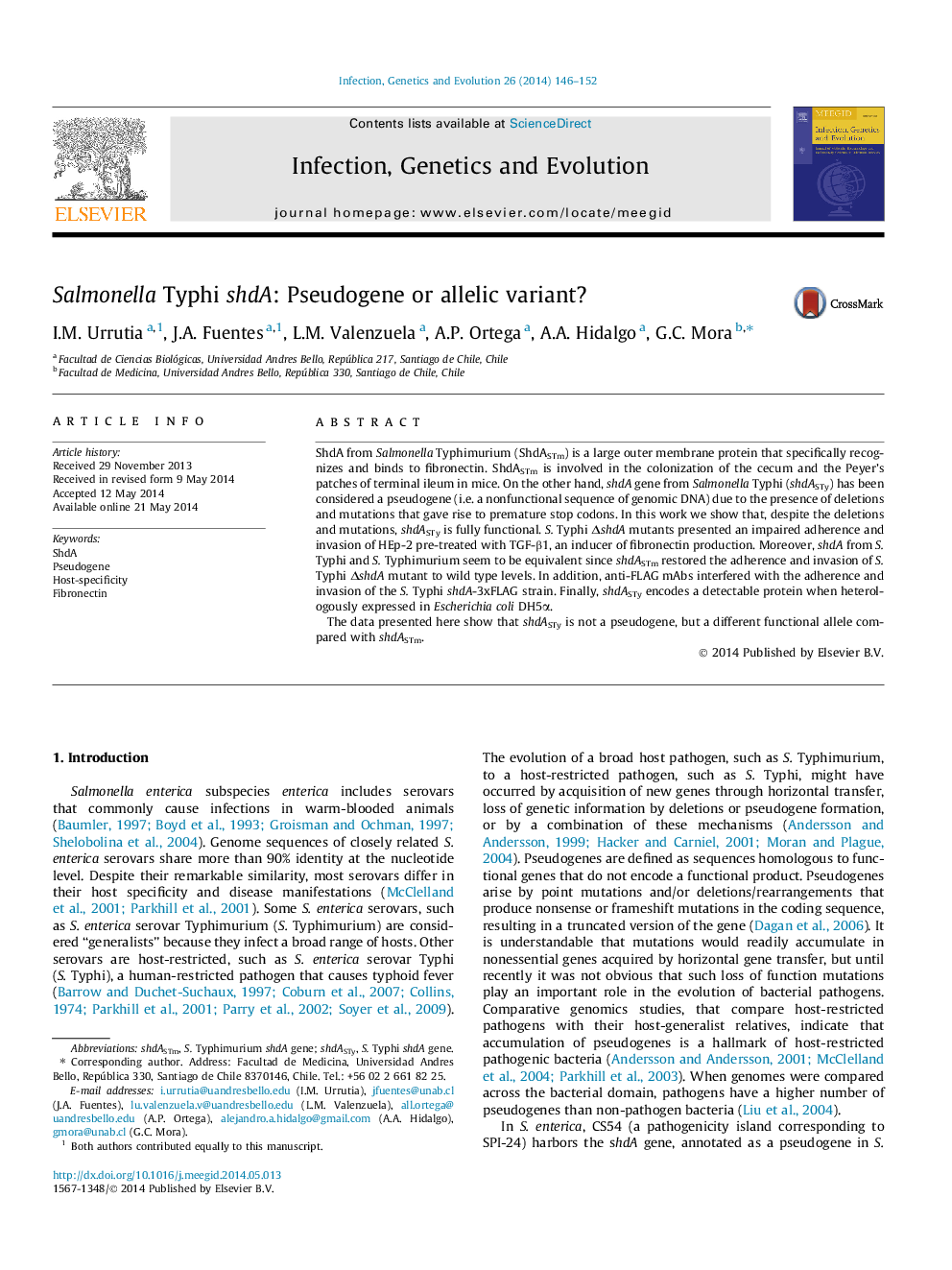| کد مقاله | کد نشریه | سال انتشار | مقاله انگلیسی | نسخه تمام متن |
|---|---|---|---|---|
| 5909634 | 1570177 | 2014 | 7 صفحه PDF | دانلود رایگان |

- S. Typhimurium ShdA corresponds to an outer membrane fibronectin-binding protein.
- S. Typhi shdA gene has been considered to be a pseudogene (i.e. non-functional).
- We found that S. Typhi shdA gene encodes a functional protein.
- S. Typhi shdA gene participates in adherence/invasion of fibronectin-producing cells.
- Experimental research is needed to unequivocally identify a pseudogene.
ShdA from Salmonella Typhimurium (ShdASTm) is a large outer membrane protein that specifically recognizes and binds to fibronectin. ShdASTm is involved in the colonization of the cecum and the Peyer's patches of terminal ileum in mice. On the other hand, shdA gene from Salmonella Typhi (shdASTy) has been considered a pseudogene (i.e. a nonfunctional sequence of genomic DNA) due to the presence of deletions and mutations that gave rise to premature stop codons. In this work we show that, despite the deletions and mutations, shdASTy is fully functional. S. Typhi ÎshdA mutants presented an impaired adherence and invasion of HEp-2 pre-treated with TGF-β1, an inducer of fibronectin production. Moreover, shdA from S. Typhi and S. Typhimurium seem to be equivalent since shdASTm restored the adherence and invasion of S. Typhi ÎshdA mutant to wild type levels. In addition, anti-FLAG mAbs interfered with the adherence and invasion of the S. Typhi shdA-3xFLAG strain. Finally, shdASTy encodes a detectable protein when heterologously expressed in Escherichia coli DH5α.The data presented here show that shdASTy is not a pseudogene, but a different functional allele compared with shdASTm.
Journal: Infection, Genetics and Evolution - Volume 26, August 2014, Pages 146-152